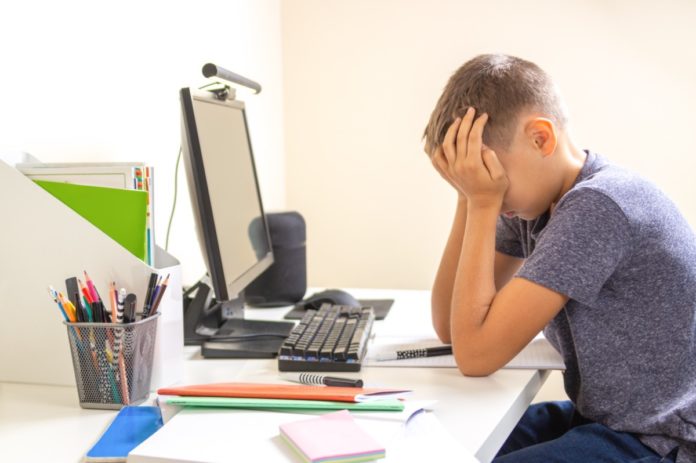Roughly a year ago marked the beginnings of COVID-19 in the Keys. The course of the year drastically changed, with a checkpoint that kept tourists away for some time, a mask mandate and capacity limits inside businesses.
School closures forced a full-on virtual instruction format for a time. In-person class resumed eventually, with K-5 students returning to school full-time. Meanwhile, some middle- and high-school students enter the classroom on A days while others go on B days.
With a recent order by Florida’s education commissioner, parents who want their children back full-time will have that choice available (see page 5 for more). And teachers of all ages are able to get vaccinated.
Despite the developments that look to get students back in the classroom full time, grade struggles and motivation problems have been apparent among the student population.
Health officials usually assess how a community is affected following natural disasters like hurricanes. Studies have shown that chronic depression and anxiety last long after the event. Look no further than Hurricane Irma.
Working closely with Monroe County schools is Guidance Care Center, which provides services from counseling to therapy for students inside school facilities. Maureen Dunleavy, area director for the Guidance Care Center, said they are seeing more anxiety and depression among students and adults due to less social interaction among classmates and friends.
“And that is also a predictive factor when we look at suicide risk and mental health,” she said. “Not only are we having more anxiety and more depression, but we’ve had less social connectedness because they’ve been on A/B, for the older kids. They’ve been away from doing social things, and that also has had an impact. It’s almost like a double whammy.”
Dunleavy has spent her career working with the young population as a licensed mental health counselor. Along with the coronavirus, Dunleavy notes that high crisis time usually occurs between spring break and the end of the year.
“It’s also testing season. I think people get anxious,” she said. “There are a lot of factors in play affecting their anxiety and stress levels, and of course that’s going to have an impact on their health.”
The school district says they’ve worked closely with the Guidance Care Center and a team of local human service agencies to support the mental health of students, staff and parents since the pandemic. For instance, school counselors and social workers launched google classrooms available to all students specifically to support their social and emotional needs and the district added an emergency “I need help” link to each google classroom for students to submit safety or mental health concerns.
“There are 16 school based counselors and therapists employed by the Guidance Care Center in our schools to support students and their families. In collaboration with our school counselors and school social workers they provide crisis response via their mobile response team,” said Becky Herrin, communications coordinator for the district’s COVID-19 response.
Dr. Stan Zuba said there’s been a bit of an increase in cases of anxiety and stress in children and adolescents related to isolation and lack of contact with others. Zuba said the cases are typically referred to Guidance Care Center or private counselors for further help.
“We try to give them those referrals as needed,” he said. “We also try to get them to exercise as much as possible. Exercise and moving around does help.”
Zuba said he and other pediatricians are following guidance put out by the American Academy of Pediatrics on supporting emotional and behavioral needs of children, adolescents and families during the pandemic. The report, which came out in January, states that older children and adolescents may find the social isolation related to the pandemic overwhelming, as socializing with peers is a mainstay of child and adolescent development.
“School-aged and older children have had their social needs disrupted significantly,” the report reads. “They also may have heightened fears about the virus, which can result in exaggerated estimation of risk and excessive worry about themselves or their families, especially in families of essential workers.”
Caregivers should be mindful of their sense of loneliness and uncertainty as they try to develop self-efficacy and confidence in their position in the world, the report says.
In many cases, quarantine increased the time that families are together. Woody Hanford, program manager with the juvenile division for the Monroe County Sheriff’s Office, acknowledged that it partly explains the drop in juvenile crime. Twelve kids are currently in the juvenile program. Of those, six were the result of incidents in school.
“Kids were home and forced to sit down and talk with their parents and have dinner with their parents,” said Hanford, who has spent his life working with juveniles. “They weren’t running off getting in trouble. During COVID, the family returned in some cases.”
And even with kids confined to the home for the better part of last year, Hanford said the division did not see any noticeable increase in domestic violence arrests. Hanford also attributes drops in juvenile delinquency to the school resource officer program.
Dunleavy is offering a 60-minute webinar on Friday, March 12 at 12:30 p.m. that delves into everything from suicide prevention to the impact of COVID-19 on mental health and coping methods.
“I’m doing this training in order to help people get the skills to be able to know what to watch for and to know when they need assistance,” she said.
Dunleavy said she’ll also be conducting a virtual training in April and May. To register, send an email to training@westcare.com and place in the subject line “GCC Suicide Prevention March 12.” For more information on GCC, visit www.gcmk.org.





















